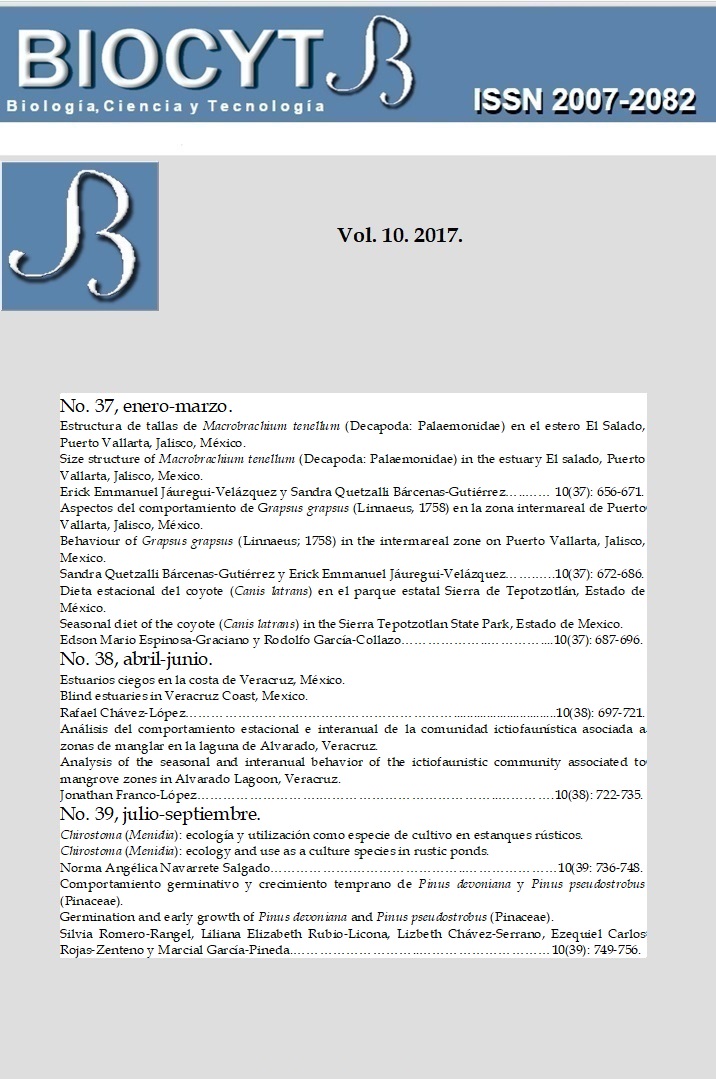ASPECTOS DEL COMPORTAMIENTO DE GRAPSUS GRAPSUS (LINNAEUS, 1758) EN LA ZONA INTERMAREAL DE PUERTO VALLARTA, JALISCO, MÉXICO
Contenido principal del artículo
Resumen
The social and reproductive behaviour of G. grapsus are related to aggressive demonstrations. These interactions are common in the acquisition or defence of resources. In this study was observed the behaviour of a crabs population and its relation to the frequency of mutilation in Puerto Vallarta, Jalisco. 93.16% of the total recording time, the organisms remained standing (20.14%), feeding (19.27%), walking (16.98%) or in the refuge (32.08%). Only 5.21% of the time corresponds to aggressive behaviours, since the first reaction to an aggression is run away, only 1.88% of the recording time the organisms were fighting. The sex ratio was 1:0.64 males/females. 62.50% of the females and 40% of the males showed mutilations, but there was no significant difference between females and males. However, in the months of August and July the males presented greater mutilation that was related to the reproductive period. During the reproduction and in general for the activities of G. grapsus, the displacement is characterized by the jumps that it makes, reason why the number of mutilations directly affects in the survival of the organism.
